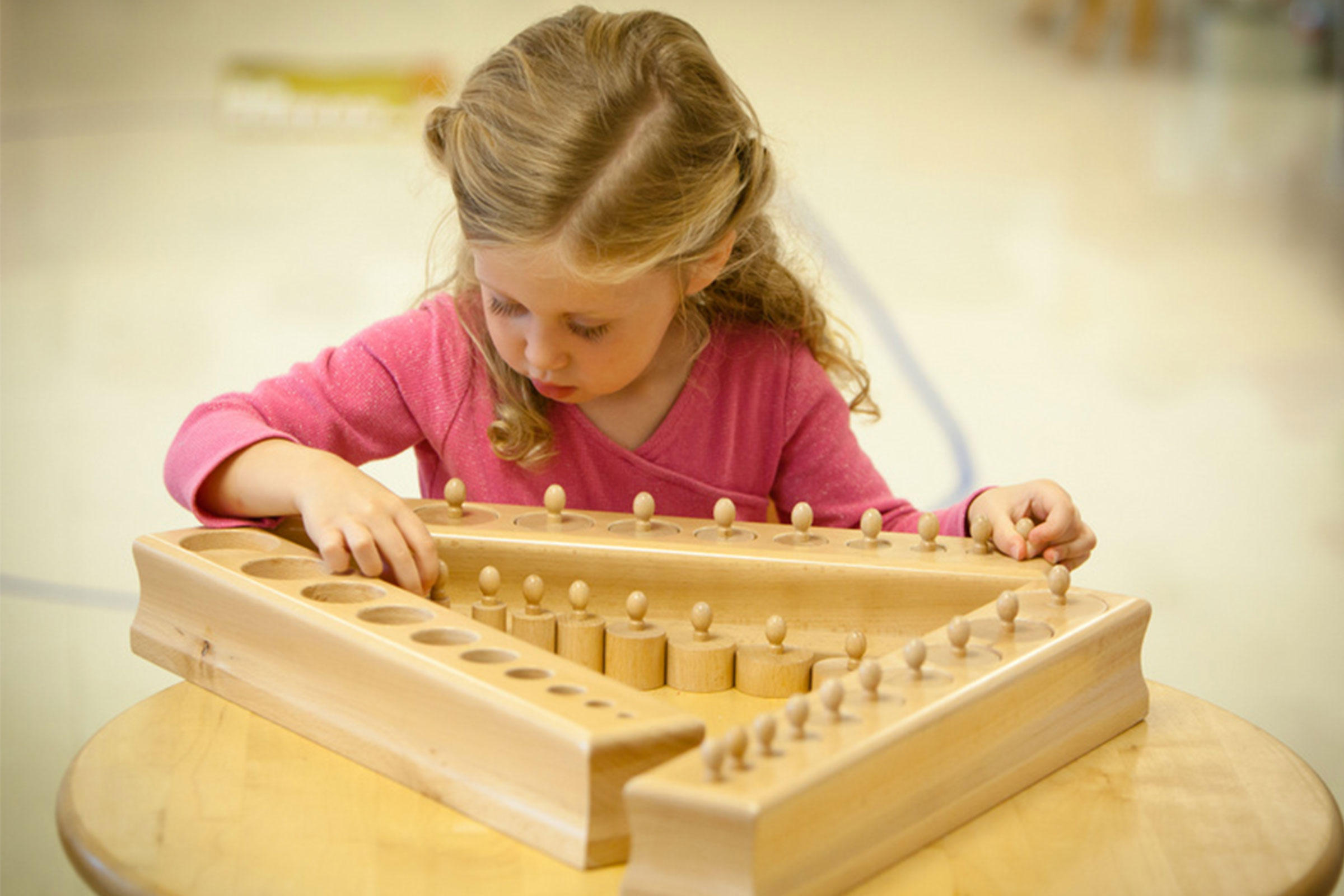As children, most of us experienced teachers collecting our work and then reviewing and marking our mistakes – usually in red pencil. As a result, children worried about making errors, and had no incentive to re-visit the work to determine where the error occurred. Maria Montessori knew that this kind of practice was not serving the child well. It did not allow the child to be a part of the process in discovering the errors or to correct the errors when they were discovered. She developed a concept called Control of Error where the children had the ability to find mistakes themselves as well as correct those errors. She envisioned the child developing a friendliness with error so that mistakes would not be dreaded but used as a springboard for investigation and eventual correction of the error.
One kind of Control of Error is within the materials, and it is called a mechanical control of error. That means that the material specifically guides the child to using it in a way that helps the child recognize the error and be able to experiment to fix it. This experimentation allows the children to repeat the process with interest and discover for themselves where the error occurred, and then correct it. Mechanical control of error is found in several materials, including cylinder blocks. Children between 3 and 6 years old are drawn to order, so they will continually work with the cylinder blocks until all the cylinders are in a matching socket.
Another kind of Control of Error relies on the child’s developed sensorial perceptions. This kind of Control of Error is called perceptual control of error, and the children will notice the discord by using their senses. Perceptual control of error is found in many materials, such as the pink tower. The child’s visual perception of size guides her to know which cube to try next. If there is a mistake, her visual perception will eventually alert her to this error, which is easily changed. Young children are in the process of developing perceptions for all their senses. This development prompts them to repeat the processes until they are satisfied with the results. This takes much trial and error, which supports the child’s development and curiosity.
Sometimes the adult is the Control of Error. This can take place in many different circumstances, and one of the most common situations is when an adult observes a child using materials already presented in a way that does not support the child’s learning. The solution here is for the adult to observe what the child is doing and plan to re-demonstrate the material at another time, giving emphasis to the place where the child got off track. This works well for the child because the child will readily accept another lesson on the material, and no issue was made of the error in the way the child was using the material. Since most lessons are given individually, it is easy to adjust the way the material is presented based on the observed needs of the individual child.
When the child is working with Mathematical materials and learning the equations for addition, subtraction, multiplication, and division, the Control of Error becomes control charts which give the child all the correct answers to the equations. This allows the children to check their own work after they have finished and become aware of mistakes and correct them. This is not done by the adult, but by the children, giving them the opportunity to find their own errors and rectify them.
There are many benefits to providing children with Control of Error opportunities. The child comes to accept errors as part of learning and repeats the activity to eradicate the error they perceive. This repetition is an important part of the learning process, and when the children master the material, they feel great satisfaction. In addition, repetition of interesting activities leads to concentration, which is another great outcome. Being friendly with error helps the children follow their curiosity and interest, as they are unconcerned with adult disapproval, but know that adult support is always available. Finding their own errors allows the child time to think about the errors, becoming mentally agile. Not being afraid of error, they are willing to try new things and work on them until they reach mastery.
In The Absorbent Mind, Maria Montessori wrote:
“So we come to a scientific principle which is also a path to perfection. We call it ‘the control of error.’ Whatever is done in school, by teachers, children, or others, there are bound to be mistakes. So we need this rule as part of school life: namely, that what matters is not so much correction in itself as that each individual should become aware of his own errors. Each should have a means of checking, so that he can tell if he is right or not.” (p.256)
Polli Soholt, AMI 3–6 Trainer
